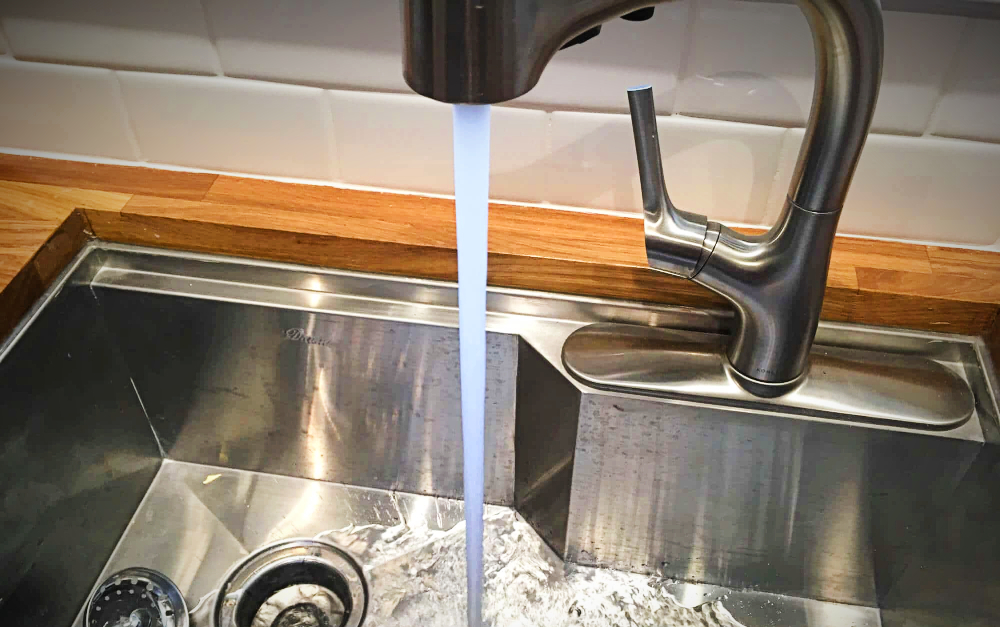
How to Increase Water Pressure in Kitchen Sink: A Comprehensive Guide
Are you tired of dealing with low water pressure in your kitchen sink? Don’t worry; you’re not alone. Many homeowners face this common issue, which can be frustrating when you’re trying to wash dishes, rinse vegetables, or fill pots. In this comprehensive guide, we will explore effective ways to increase sink water pressure in your kitchen sink. Whether you’re dealing with kitchen sink low water pressure, low water pressure on kitchen sink, or other related problems, we’ve got you covered.
Understanding the Problem
Before we delve into the solutions, it’s essential to understand why you might be experiencing low water pressure in your kitchen sink. Several factors can contribute to this issue, including:
Clogged Faucet Aerators: Over time, mineral deposits can build up in the faucet aerators, reducing water flow.
Water Supply Issues: Low water pressure in the kitchen may be due to a problem with your home’s water supply or the municipal water system.
Plumbing Problems: Leaks, damaged pipes, or improper plumbing installations can all affect water pressure.
Identifying the Main Cause
The first step in solving the problem is to identify the main cause of low water pressure. Let’s take a closer look at some possible scenarios:
Kitchen Sink Low Water Pressure
If the low water pressure is specific to your kitchen sink, the issue likely lies within the sink’s components. Let’s address this problem step by step:
1. Check Faucet Aerators
- Begin by examining the faucet aerators. These are small devices attached to the faucet spout that mix air with water to regulate flow.
- If you notice mineral deposits or debris clogging the aerators, remove and clean them thoroughly.
2. Inspect the Water Supply Valves
- Ensure that the water supply valves under the sink are fully open. Sometimes, these valves can accidentally get partially closed, reducing water flow.
3. Examine the Sink’s Plumbing
- If cleaning the aerators and checking the water supply valves doesn’t solve the problem, there could be an issue with the sink’s plumbing.
- Inspect the pipes for leaks, corrosion, or blockages. A professional plumber may be required to address these issues.
Low Water Pressure in the Kitchen
If the entire kitchen has low water pressure, the problem may be related to the water supply or plumbing system in your home. Follow these steps to diagnose and address the issue:
1. Check Other Faucets
- Verify if low sink water pressure is consistent in all kitchen faucets.
- If multiple faucets are affected, the issue likely lies within your home’s plumbing or the municipal water supply.
2. Consult Your Neighbors
- If your neighbors are also experiencing low water pressure, contact your local water authority to inquire about any ongoing supply issues or maintenance work.
3. Inspect Your Home’s Pipes
- If the problem seems isolated to your home, inspect the pipes for potential leaks, blockages, or corrosion.
- A professional plumber can help identify and resolve these issues.
Solutions to Increase Water Pressure
Now that you’ve identified the cause of low water pressure, let’s explore effective solutions to increase water pressure in sink:
1. Clean and Replace Faucet Aerators
- Regularly clean faucet aerators to remove mineral deposits and debris.
- Consider replacing old or damaged aerators with high-efficiency models for improved water flow.
2. Adjust Water Supply Valves
- Ensure that the water supply valves under the sink are fully open.
- Gradually adjust the valves to find the optimal water pressure for your needs.
3. Fix Plumbing Issues
- If you suspect plumbing problems, consult a licensed plumber to identify and repair leaks, blockages, or damaged pipes.
4. Install a Water Pump Faucet
- In cases of persistent low water pressure, consider installing a water pump faucet to boost water flow.
FAQs
Q: Why is my kitchen sink water pressure low?
A: Kitchen sink low pressure can be due to clogged faucet aerators, partially closed water supply valves, or plumbing issues. Identify the specific cause to implement the appropriate solution.
Q: Can I fix low water pressure myself?
A: Cleaning faucet aerators and adjusting water supply valves are tasks you can handle. However, for more complex issues like plumbing problems, it’s advisable to hire a professional plumber.
Q: What is a water pump faucet, and how does it work?
A: A water pump faucet is a device that boosts water pressure by using a pump to increase flow. It’s an effective solution for areas with consistently low water pressure.
Q: How much does it cost to fix low water pressure in the kitchen sink?
A: The cost of fixing low water pressure varies depending on the cause. Cleaning faucet aerators and adjusting valves are relatively inexpensive, while plumbing repairs or installing a water pump faucet may require a larger investment.
Q: Can low water pressure affect appliance performance?
A: Yes, low water pressure can impact the performance of appliances like dishwashers and ice makers. Adequate water pressure is essential for these appliances to function efficiently.
Q: Are there any DIY solutions to increase water pressure?
A: Cleaning faucet aerators and adjusting water supply valves are common DIY solutions. However, for more complex issues, it’s best to consult a professional.
Conclusion
Dealing with low water pressure in your kitchen sink can be frustrating. Hope you got a detail guide about how to increase water pressure in kitchen sink. But it’s a problem that can often be resolved with the right approach. By identifying the cause and implementing the appropriate solutions, you can enjoy improved water pressure and a more efficient kitchen. Remember, when in doubt, consult a professional plumber to ensure your plumbing system is in optimal condition.